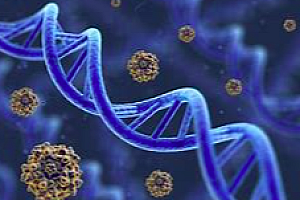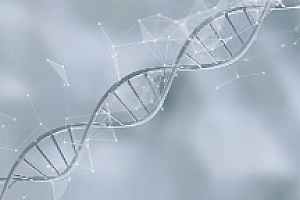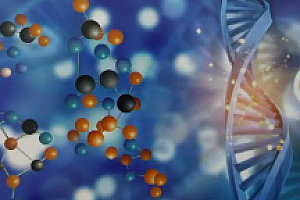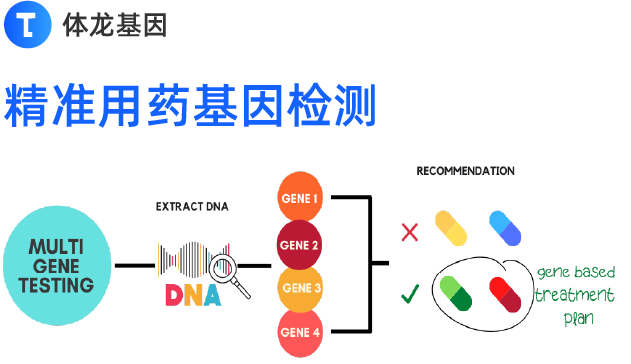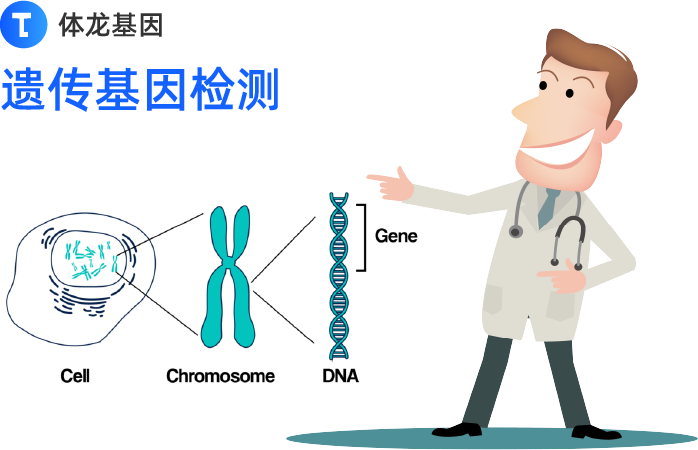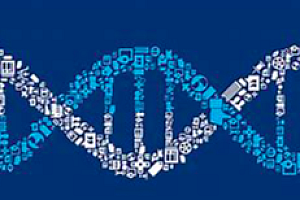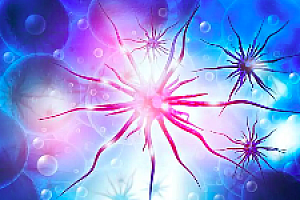Single-cell analysis reveals T cell infiltration in old neurogenic niches
Ben W. Dulken,
Matthew T. Buckley,
Paloma Navarro Negredo,
Naresha Saligrama,
Romain Cayrol,
Dena S. Leeman,
Benson M. George,
Stéphane C. Boutet,
Katja Hebestreit,
John V. Pluvinage,
Tony Wyss-Coray,
Irving L. Weissman,
Hannes Vogel,
Mark M. Davis &
Anne Brunet
Naturevolume 571, pages205–210 (2019) | Download Citation
Article metrics
Citations
0
Altmetric
303
More details
Article metrics
Abstract
The mammalian brain contains neurogenic niches that comprise neural stem cells and other cell types. Neurogenic niches become less functional with age, but how they change during ageing remains unclear. Here we perform single-cell RNA sequencing of young and old neurogenic niches in mice. The analysis of 14,685 single-cell transcriptomes reveals a decrease in activated neural stem cells, changes in endothelial cells and microglia, and an infiltration of T cells in old neurogenic niches. T cells in old brains are clonally expanded and are generally distinct from those in old blood, which suggests that they may experience specific antigens. T cells in old brains also express interferon-γ, and the subset of neural stem cells that has a high interferon response shows decreased proliferation in vivo. We find that T cells can inhibit the proliferation of neural stem cells in co-cultures and in vivo, in part by secreting interferon-γ. Our study reveals an interaction between T cells and neural stem cells in old brains, opening potential avenues through which to counteract age-related decline in brain function.
Data availability
All raw sequencing reads for single-cell RNA-seq data (10x Genomics, Smart-seq v4, and Fluidigm C1) as well as bulk RNA-seq data can be found under BioProject PRJNA450425. The command and configuration files, in addition to a list of all versioned dependencies present in the running environment, are available in the Github repository for this paper (https://github.com/gitbuckley/SingleCellAgingSVZ).
Additional information
Publisher’s note: Springer Nature remains neutral with regard to jurisdictional claims in published maps and institutional affiliations.
References
1.
Mirzadeh, Z., Merkle, F. T., Soriano-Navarro, M., Garcia-Verdugo, J. M. & Alvarez-Buylla, A. Neural stem cells confer unique pinwheel architecture to the ventricular surface in neurogenic regions of the adult brain. Cell Stem Cell 3, 265–278 (2008).
CAS
Article
Google Scholar
2.
Shen, Q. et al. Adult SVZ stem cells lie in a vascular niche: a quantitative analysis of niche cell-cell interactions. Cell Stem Cell3, 289–300 (2008).
CAS
Article
Google Scholar
3.
Tavazoie, M. et al. A specialized vascular niche for adult neural stem cells. Cell Stem Cell 3, 279–288 (2008).
CAS
Article
Google Scholar
4.
Codega, P. et al. Prospective identification and purification of quiescent adult neural stem cells from their in vivo niche. Neuron82, 545–559 (2014).
CAS
Article
Google Scholar
5.
Bond, A. M., Ming, G. L. & Song, H. Adult mammalian neural stem cells and neurogenesis: five decades later. Cell Stem Cell 17, 385–395 (2015).
CAS
Article
Google Scholar
6.
Gage, F. H. & Temple, S. Neural stem cells: generating and regenerating the brain. Neuron 80, 588–601 (2013).
CAS
Article
Google Scholar
7.
Maslov, A. Y., Barone, T. A., Plunkett, R. J. & Pruitt, S. C. Neural stem cell detection, characterization, and age-related changes in the subventricular zone of mice. J. Neurosci. 24, 1726–1733 (2004).
CAS
Article
Google Scholar
8.
Luo, J., Daniels, S. B., Lennington, J. B., Notti, R. Q. & Conover, J. C. The aging neurogenic subventricular zone. Aging Cell 5, 139–152 (2006).
CAS
Article
Google Scholar
9.
Chaker, Z., Aïd, S., Berry, H. & Holzenberger, M. Suppression of IGF-I signals in neural stem cells enhances neurogenesis and olfactory function during aging. Aging Cell 14, 847–856 (2015).
CAS
Article
Google Scholar
10.
Enwere, E. et al. Aging results in reduced epidermal growth factor receptor signaling, diminished olfactory neurogenesis, and deficits in fine olfactory discrimination. J. Neurosci. 24, 8354–8365 (2004).
CAS
Article
Google Scholar
11.
Tropepe, V., Craig, C. G., Morshead, C. M. & van der Kooy, D. Transforming growth factor-α null and senescent mice show decreased neural progenitor cell proliferation in the forebrain subependyma. J. Neurosci. 17, 7850–7859 (1997).
CAS
Article
Google Scholar
12.
Molofsky, A. V. et al. Increasing p16INK4a expression decreases forebrain progenitors and neurogenesis during ageing. Nature443, 448–452 (2006).
ADS
CAS
Article
Google Scholar
13.
Ahlenius, H., Visan, V., Kokaia, M., Lindvall, O. & Kokaia, Z. Neural stem and progenitor cells retain their potential for proliferation and differentiation into functional neurons despite lower number in aged brain. J. Neurosci. 29, 4408–4419 (2009).
CAS
Article
Google Scholar
14.
Leeman, D. S. et al. Lysosome activation clears aggregates and enhances quiescent neural stem cell activation during aging.Science 359, 1277–1283 (2018).
ADS
CAS
Article
Google Scholar
15.
Silva-Vargas, V., Maldonado-Soto, A. R., Mizrak, D., Codega, P. & Doetsch, F. Age-dependent niche signals from the choroid plexus regulate adult neural stem cells. Cell Stem Cell 19, 643–652 (2016).
CAS
Article
Google Scholar
16.
Ernst, A. et al. Neurogenesis in the striatum of the adult human brain. Cell 156, 1072–1083 (2014).
CAS
Article
Google Scholar
17.
Llorens-Bobadilla, E. et al. Single-cell transcriptomics reveals a population of dormant neural stem cells that become activated upon brain injury. Cell Stem Cell 17, 329–340 (2015).
CAS
Article
Google Scholar
18.
Hochgerner, H. Z., Amit, A., Lönnerberg, P. & Linnarsson, S. Conserved properties of dentate gyrus neurogenesis across postnatal development revealed by single-cell RNA sequencing.Nat. Neurosci. 21, 290–299 (2018).
CAS
Article
Google Scholar
19.
Shin, J. et al. Single-cell RNA-seq with waterfall reveals molecular cascades underlying adult neurogenesis. Cell Stem Cell 17, 360–372 (2015).
CAS
Article
Google Scholar
20.
Dulken, B. W., Leeman, D. S., Boutet, S. C., Hebestreit, K. & Brunet, A. Single-cell transcriptomic analysis defines heterogeneity and transcriptional dynamics in the adult neural stem cell lineage. Cell Rep. 18, 777–790 (2017).
CAS
Article
Google Scholar
21.
Luo, Y. et al. Single-cell transcriptome analyses reveal signals to activate dormant neural stem cells. Cell 161, 1175–1186 (2015).
CAS
Article
Google Scholar
22.
Mizrak, D. et al. Single-cell analysis of regional differences in adult V-SVZ neural stem cell lineages. Cell Rep. 26, 394–406.e5 (2019).
CAS
Article
Google Scholar
23.
Zywitza, V., Misios, A., Bunatyan, L., Willnow, T. E. & Rajewsky, N. Single-cell transcriptomics characterizes cell types in the subventricular zone and uncovers molecular defects impairing adult neurogenesis. Cell Rep. 25, 2457–2469.e8 (2018).
CAS
Article
Google Scholar
24.
Basak, O. et al. Troy+ brain stem cells cycle through quiescence and regulate their number by sensing niche occupancy. Proc. Natl Acad. Sci. USA 115, E610–E619 (2018).
CAS
Article
Google Scholar
25.
Shi, Z. et al. Single-cell transcriptomics reveals gene signatures and alterations associated with aging in distinct neural stem/progenitor cell subpopulations. Protein Cell 9, 351–364 (2018).
CAS
PubMed
Google Scholar
26.
Kalamakis, G. et al. Quiescence modulates stem cell maintenance and regenerative capacity in the aging brain. Cell 176, 1407–1419.e14 (2019).
CAS
Article
Google Scholar
27.
Haring, J. S., Badovinac, V. P. & Harty, J. T. Inflaming the CD8+ T cell response. Immunity 25, 19–29 (2006).
CAS
Article
Google Scholar
28.
Montagne, A. et al. Blood-brain barrier breakdown in the aging human hippocampus. Neuron 85, 296–302 (2015).
CAS
Article
Google Scholar
29.
Han, A., Glanville, J., Hansmann, L. & Davis, M. M. Linking T-cell receptor sequence to functional phenotype at the single-cell level. Nat. Biotechnol. 32, 684–692 (2014).
CAS
Article
Google Scholar
30.
Schroder, K., Hertzog, P. J., Ravasi, T. & Hume, D. A. Interferon-gamma: an overview of signals, mechanisms and functions. J. Leukoc. Biol. 75, 163–189 (2004).
CAS
Article
Google Scholar
31.
Yu, Q. et al. Type I interferon controls propagation of long interspersed element-1. J. Biol. Chem. 290, 10191–10199 (2015).
CAS
Article
Google Scholar
32.
De Cecco, M. et al. L1 drives IFN in senescent cells and promotes age-associated inflammation. Nature 566, 73–78 (2019).
ADS
Article
Google Scholar
33.
Pereira, L., Medina, R., Baena, M., Planas, A. M. & Pozas, E. IFN gamma regulates proliferation and neuronal differentiation by STAT1 in adult SVZ niche. Front. Cell. Neurosci. 9, 270 (2015).
PubMed
PubMed Central
Google Scholar
34.
Baruch, K. et al. Aging-induced type I interferon response at the choroid plexus negatively affects brain function. Science 346, 89–93 (2014).
ADS
CAS
Article
Google Scholar
35.
Li, L., Walker, T. L., Zhang, Y., Mackay, E. W. & Bartlett, P. F. Endogenous interferon gamma directly regulates neural precursors in the non-inflammatory brain. J. Neurosci. 30, 9038–9050 (2010).
CAS
Article
Google Scholar
36.
Filiano, A. J. et al. Unexpected role of interferon-γ in regulating neuronal connectivity and social behaviour. Nature 535, 425–429 (2016).
ADS
CAS
Article
Google Scholar
37.
Yoo, H., Park, S. H., Ye, S. K. & Kim, M. IFN-γ-induced BST2 mediates monocyte adhesion to human endothelial cells. Cell. Immunol. 267, 23–29 (2011).
CAS
Article
Google Scholar
38.
Holmgren, A. M., Miller, K. D., Cavanaugh, S. E. & Rall, G. F. Bst2/tetherin is induced in neurons by type I interferon and viral infection but is dispensable for protection against neurotropic viral challenge. J. Virol. 89, 11011–11018 (2015).
CAS
Article
Google Scholar
39.
Evans, D. T., Serra-Moreno, R., Singh, R. K. & Guatelli, J. C. BST-2/tetherin: a new component of the innate immune response to enveloped viruses. Trends Microbiol. 18, 388–396 (2010).
CAS
Article
Google Scholar
40.
Constantinescu, C. S., Farooqi, N., O’Brien, K. & Gran, B. Experimental autoimmune encephalomyelitis (EAE) as a model for multiple sclerosis (MS). Br. J. Pharmacol. 164, 1079–1106 (2011).
CAS
Article
Google Scholar
41.
Weiss, H. A., Millward, J. M. & Owens, T. CD8+ T cells in inflammatory demyelinating disease. J. Neuroimmunol. 191, 79–85 (2007).
CAS
Article
Google Scholar
42.
Raué, H. P., Brien, J. D., Hammarlund, E. & Slifka, M. K. Activation of virus-specific CD8+ T cells by lipopolysaccharide-induced IL-12 and IL-18. J. Immunol. 173, 6873–6881 (2004).
Article
Google Scholar
43.
Town, T., Tan, J., Flavell, R. A. & Mullan, M. T-cells in Alzheimer’s disease. Neuromolecular Med. 7, 255–264 (2005).
CAS
Article
Google Scholar
44.
Sulzer, D. et al. T cells from patients with Parkinson’s disease recognize α-synuclein peptides. Nature 546, 656–661 (2017).
ADS
CAS
Article
Google Scholar
45.
Buckwalter, M. S. et al. Increased T cell recruitment to the CNS after amyloid β1–42 immunization in Alzheimer’s mice overproducing transforming growth factor-β1. J. Neurosci. 26, 11437–11441 (2006).
CAS
Article
Google Scholar
46.
Ritzel, R. M. et al. Age-associated resident memory CD8 T cells in the central nervous system are primed to potentiate inflammation after ischemic brain injury. J. Immunol. 196, 3318–3330 (2016).
CAS
Article
Google Scholar
47.
Mrdjen, D. et al. High-dimensional single-cell mapping of central nervous system immune cells reveals distinct myeloid subsets in health, aging, and disease. Immunity 48, 380–395.e6 (2018).
CAS
Article
Google Scholar
48.
Salter, M. W. & Stevens, B. Microglia emerge as central players in brain disease. Nat. Med. 23, 1018–1027 (2017).
CAS
Article
Google Scholar
49.
Pober, J. S. & Sessa, W. C. Evolving functions of endothelial cells in inflammation. Nat. Rev. Immunol. 7, 803–815 (2007).
CAS
Article
Google Scholar
50.
Kokaia, Z., Martino, G., Schwartz, M. & Lindvall, O. Cross-talk between neural stem cells and immune cells: the key to better brain repair? Nat. Neurosci. 15, 1078–1087 (2012).
CAS
Article
Google Scholar
51.
Louveau, A., Harris, T. H. & Kipnis, J. Revisiting the mechanisms of CNS immune privilege. Trends Immunol. 36, 569–577 (2015).
CAS
Article
Google Scholar
52.
Ziv, Y., Avidan, H., Pluchino, S., Martino, G. & Schwartz, M. Synergy between immune cells and adult neural stem/progenitor cells promotes functional recovery from spinal cord injury. Proc. Natl Acad. Sci. USA 103, 13174–13179 (2006).
ADS
CAS
Article
Google Scholar
53.
McGavern, D. B., Homann, D. & Oldstone, M. B. A. T cells in the central nervous system: the delicate balance between viral clearance and disease. J. Infect. Dis. 186 (Suppl 2), S145–S151 (2002).
Article
Google Scholar
54.
Wakim, L. M., Woodward-Davis, A. & Bevan, M. J. Memory T cells persisting within the brain after local infection show functional adaptations to their tissue of residence. Proc. Natl Acad. Sci. USA107, 17872–17879 (2010).
ADS
CAS
Article
Google Scholar
55.
Satija, R., Farrell, J. A., Gennert, D., Schier, A. F. & Regev, A. Spatial reconstruction of single-cell gene expression data. Nat. Biotechnol. 33, 495–502 (2015).
CAS
Article
Google Scholar
56.
Doetsch, F., Caillé, I., Lim, D. A., García-Verdugo, J. M. & Alvarez-Buylla, A. Subventricular zone astrocytes are neural stem cells in the adult mammalian brain. Cell 97, 703–716 (1999).
CAS
Article
Google Scholar
57.
Capilla-Gonzalez, V., Cebrian-Silla, A., Guerrero-Cazares, H., Garcia-Verdugo, J. M. & Quiñones-Hinojosa, A. Age-related changes in astrocytic and ependymal cells of the subventricular zone. Glia 62, 790–803 (2014).
Article
Google Scholar
58.
Jin, Y.-H. & Kim, B. S. Isolation of CNS-infiltrating and resident microglial cells. Bio Protoc. 5, e1385 (2015).
PubMed
PubMed Central
Google Scholar
59.
Stubbington, M. J. T. et al. T cell fate and clonality inference from single-cell transcriptomes. Nat. Methods 13, 329–332 (2016).
Article
Google Scholar
60.
Nakamura, K. et al. Sequence-specific error profile of Illumina sequencers. Nucleic Acids Res. 39, e90 (2011).
CAS
Article
Google Scholar
61.
Sergushichev, A. A. An algorithm for fast preranked gene set enrichment analysis using cumulative statistic calculation. Preprint at https://www.biorxiv.org/content/10.1101/060012v1(2016).
62.
Finak, G. et al. MAST: a flexible statistical framework for assessing transcriptional changes and characterizing heterogeneity in single-cell RNA sequencing data. Genome Biol. 16, 278 (2015).
Article
Google Scholar
63.
Robinson, M. D., McCarthy, D. J. & Smyth, G. K. edgeR: a Bioconductor package for differential expression analysis of digital gene expression data. Bioinformatics 26, 139–140 (2010).
CAS
Article
Google Scholar
64.
Bittner, S., Afzali, A. M., Wiendl, H. & Meuth, S. G. Myelin oligodendrocyte glycoprotein (MOG35-55) induced experimental autoimmune encephalomyelitis (EAE) in C57BL/6 mice. J. Vis. Exp. 86, 51275 (2014).
Google Scholar
扫描上面二维码在移动端打开阅读



